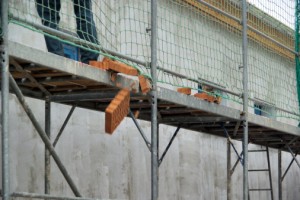 Occupational hazards are present in all types of work environments. Although people tend to associate workplace injuries with high-risk occupations like construction, jobs with few obvious dangers can cause devastating injuries and deaths as well. Many workplace accidents are the direct result of someone else’s negligence. The most common workplace hazards involve materials, equipment, other employees, and the working environment itself.
Occupational hazards are present in all types of work environments. Although people tend to associate workplace injuries with high-risk occupations like construction, jobs with few obvious dangers can cause devastating injuries and deaths as well. Many workplace accidents are the direct result of someone else’s negligence. The most common workplace hazards involve materials, equipment, other employees, and the working environment itself.
Employers are expected to adhere to safety standards set forth by the state and federal Occupational Health and Safety Administrations. When an occupational hazard causes an accident that injures another person, it is important to determine who may be at fault for the injury and if you have a valid legal claim against them.
Let the Ginarte law firm help you. Our attorneys have successfully represented clients, who have been severely injured by occupational hazards throughout the New York and New Jersey metro area. We will partner with a team of inspection experts to determine whether a lawsuit exists, and fight for your rights in court.
Speak With A Knowledgeable Professional
Call 1-888-GINARTE (1-888-446-2783), or fill out our online form to schedule a free consultation. There are no fees unless we win your case.
About NY/NJ Occupational Hazards
An occupational hazard can be defined as any danger in the workplace that creates or increases the risk of injury to someone else. Workplace hazards also include any conditions that result in occupational illnesses, such as cancer or asthma.
Not surprisingly, construction and other industrial sites are filled with hazards that pose serious threats to workers. Job sites are incredibly busy, with groups of workers engaged in a multitude of different, dangerous, tasks. Even with safeguards in place, there is still a strong possibility that serious dangers will go unobserved until it is too late.
Examples of occupational hazards include:
- Heavy machinery — There is no shortage of heavy equipment on construction work-sites, such as cranes, forklifts, diggers, bulldozers, wrecking balls, jackhammers, and power tools. Workers are often injured when they are struck by, or caught between, heavy machinery on the job.
- Heavy materials — Hauling around heavy materials such as sand or shingles, puts a lot of pressure on the body. The Bureau of Labor Statistics has found that musculoskeletal sprains and strains are among the top causes of workplace injuries. Those types of injuries can happen in other jobs too. Health care workers often strain their backs lifting patients.
- Electrical hazards — Electrocution is one of the most common killers in the construction industry, according to OSHA. Workers in close proximity to power lines, faulty extension cords, pooling water, and improperly grounded equipment are at risk for electrocution and severe electrical burns.
- Power tools — Even household power tools can be manufactured or designed improperly. A malfunction could cause all types of injury, ranging from amputation and brain injury to serious cuts and lacerations.
- Ladders/scaffolds — Falls are the leading cause of death on construction sites. Working at heights is inherently dangerous, and can lead to broken bones, paralysis, and other injuries.
- Asbestos and silica dust — Asbestos has been linked to mesothelioma, an incurable lung disease that has become the subject of lawsuits across the nation. Inhalation of silica dust and other particles is also linked to lung cancer, lung scarring, and inflammation of the lining of the lungs.
- Toxic fumes — Exposure to dangerous fumes, such as welding dust and chemicals, has been associated with cancer, delayed development, rashes, infertility, and other serious diseases. Some of the dangerous substances that people are exposed to include: carbon monoxide, cyanide, formaldehyde, lead, arsenic, mercury, and gasoline.
- Noise — Some jobs are routinely noisy. The National Institutes of Health found that sounds over 85 decibels (like you might hear in city traffic) have been associated with hearing damage. A one-time exposure, such as an explosion, can cause deafness. Continuous exposure can have the same outcome, just over a longer period of time.
- Co-workers — A co-worker could accidentally make a deadly error that could have been avoided with the proper education. The Occupational Health and Safety Act requires employers to provide appropriate safety information to workers by implementing practices such as training, warning labels, alarms, information sheets, and safety gear.
Consequences Of An Occupational Hazard Injury
Speak With A Knowledgeable Professional
Some injuries are obvious, and require immediate medical treatment. Others, particularly occupational illnesses, do not manifest for months, years, and even decades after exposure. Either way, employees who have been harmed due to an occupational hazard should have their medical and wage losses compensated through New York and New Jersey workers’ compensation programs. Because it is a “no-fault” system, employees do not have to prove the employer caused the injury to get coverage.
However, if an injury occurred as the result of a third party’s negligence, such as a subcontractor or manufacturer of faulty equipment, a victim may also be able to file a personal injury claim. A successful lawsuit could provide additional compensation that is not possible through workers’ comp, so it is important to have an attorney evaluate your case as soon as you can.
Contact Our On-The-Job Injury Lawyers Today
If you, or someone you love, is the victim of an occupational hazard injury, the qualified attorneys at Ginarte Gonzalez Winograd L.L.P., can provide a free consultation of your claim. Our lawyers are conveniently located in offices throughout the New York and New Jersey metro area. Call 1-888-GINARTE (1-888-446-2783), or use our online form to get started.
Speak With A Knowledgeable Professional
